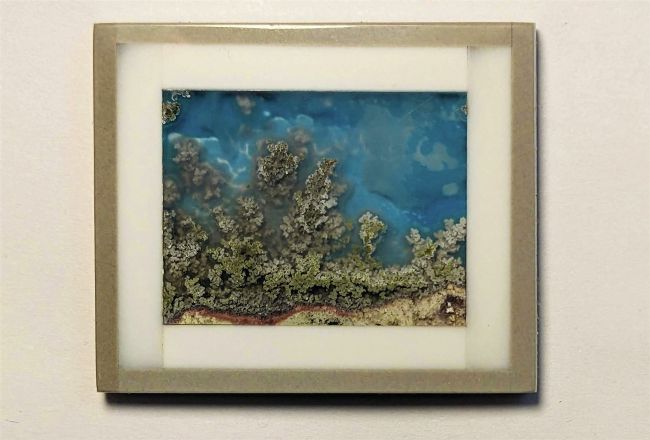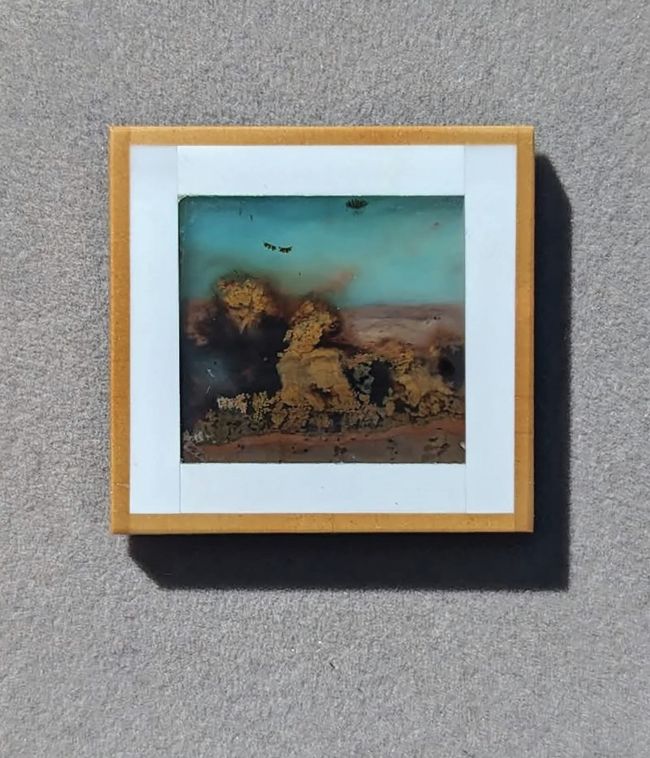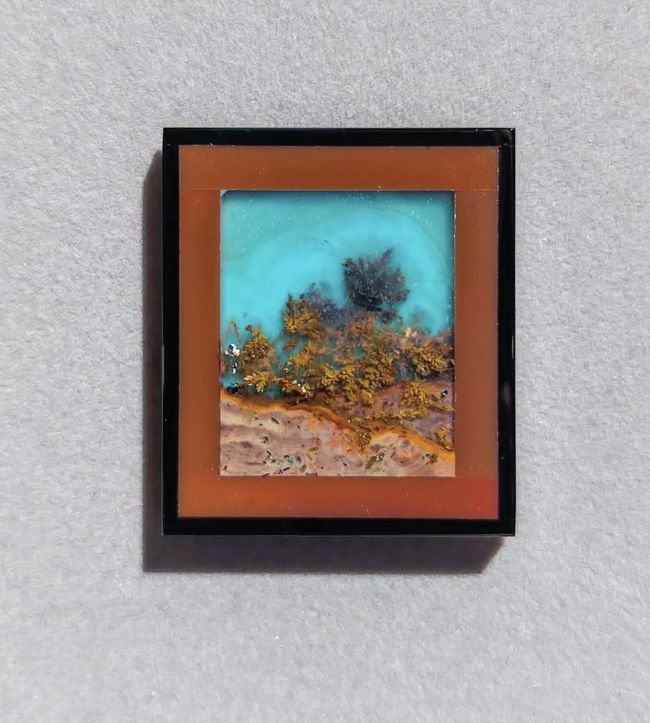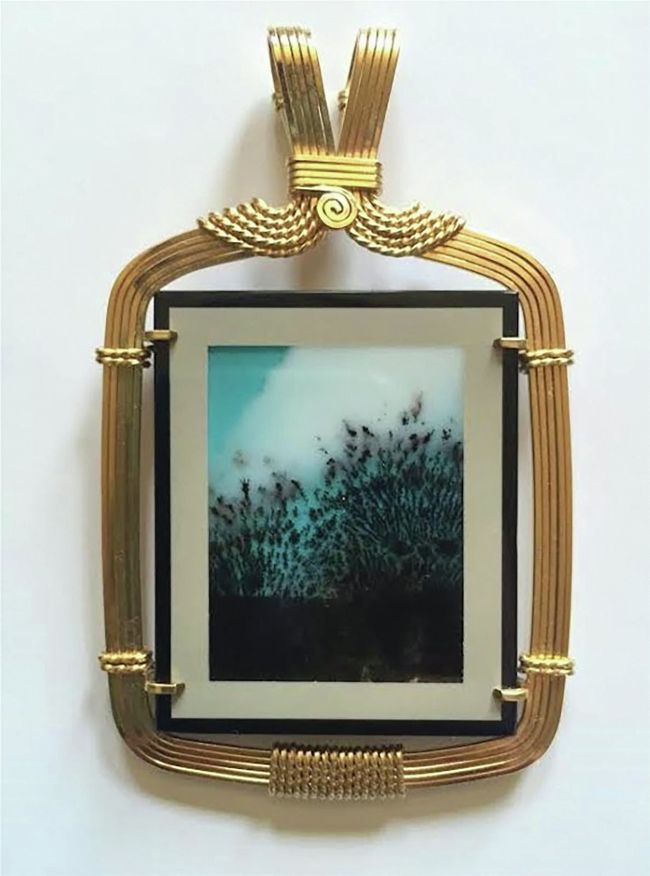Intarsia An Ancient Art Form in Agate
Eugene Mueller’s Tiny Works of Art
BY SUE EYRE

(11 pieces) Center: Indonesian moss agate, turquoise and black basalt; Border: White agate and grey jasper
Courtesy Eugene Mueller

(13 pieces) Center: Montana moss agate, Del Norte plume agate, Peruvian blue opal, turquoise and basalt; Border: White agate and Wildhorse picture jasper
Courtesy Eugene Mueller

Center: Moss agate, turquoise and basalt; Border: Bruneau jasper and black onyx
Courtesy Eugene Mueller

Single slab of Santa Maria plume agate, turquoise and black basalt; Border: Black onyx and Wildhorse picture jasper
Courtesy Eugene Mueller

Intarsia #231: Kazakhstan dendrite agate, turquoise, flint and black onyx. From the DeBruin collection, wire-wrapped by Aquarius of Arkansas.
Courtesy The Ozaukee County News Graphic
Once an ancient art form developed by the Mesopotamians and later perfected by the Italians, intarsia, the art of combining materials to design intricate pictures, images or designs, continues to be used by today’s artists using wood, stone and now agate.
Eugene Mueller, owner of The Gem Shop in Cedarburg, Wisconsin, has put his spin on this ancient art form to create tiny framed landscapes from thin slices of agate and other gemstones.
WHAT IS INTARSIA?
Intarsia is defined as the process of cutting material out of a solid body of one material to receive sections of another material to create a surface pattern, scene or image.
Following are a few terms sometimes used in conjunction with intarsia—each is not only considered an art form on its own but also has played a role in the development of intarsia as we know it today.
Inlay: Embedding pieces of one material into a base material to form a pattern.